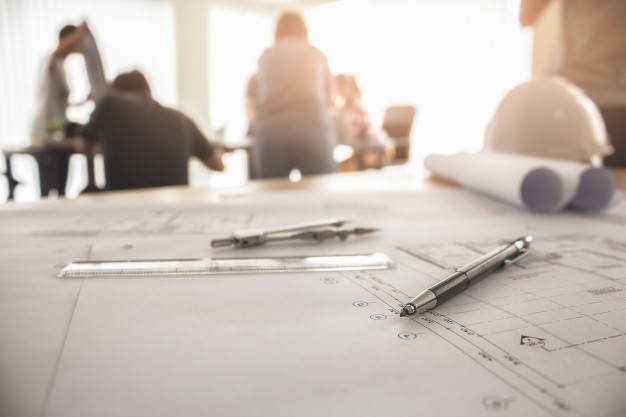Helping Clients Realise Their Vision
"There is scarcely anything in the world that some man cannot make a little worse, and sell a little more cheaply. The person who buys on price alone is this man's lawful prey"
- John Ruskin
I once saw this quotation on the wall in an architect's office. Its' a classic viewpoint for architects: bemoaning their clients lack of appreciation for design quality.
Whilst I can see where the architect is coming from, I think it is a mistake to take this approach. Here's why: At the heart of the relationship between architect and client, the architect needs to see a building from their clients' perspective.
Taking the Ruskin view in this way sets the architect up in a position of judgment on the values and motivations of people who need buildings, and drives an ideological wedge between architect and client.
Think about how a client is motivated to build, and consider how you would think about buying any type of product:
In life our buying choices are many, as are the contexts in which we buy them. Last year I purchased a kayak online. I'd been wanting to get in to kayaking for a while but wasn't sure if I'd love it enough to justify a spending lot of money up front on equipment to get me started. So for just £50 I bought an inflatable kayak from eBay to try it out.
Granted, I don't expect my kayak to last forever, and naturally I'd prefer a top-of-the-range product, but given my finite salary I'm happy to go for the cheaper option if it means I can get into an activity that I couldn't otherwise afford to if i was limited to buying the 'quality' option or nothing. Architects should expect their clients to sometimes share that view when approaching a build.
When I say that I'm not disregarding quality; I'm simply weighing up competing options. When I look at the buildings that the architectural profession produces, I can't help but think that sometime our clients may choose their building work in the same way. Sometimes they want the best, but maybe sometimes they just want a cheap shed that does the job.
Of course I'd be the first to advocate the value that quality design contributes - to both the longevity of the building and the personal benefits to the people who use it. Good design can facilitate well-being for the people who inhabit it, and can pay for itself many times over in the long term.
But surely choosing the cheaper option or the quality option has to be the client's choice. It can't be something decided from on high by the architect. The client knows their own circumstances better than the architect does. Architects and designers need to respect those choices even if they don't line up with our own opinions, preferences, or just our love of making nice things.
There is a deeper problem that quoting Ruskin creates: in the nature of relationship.
When architects take an ideologically-rigid view of client choices we set ourselves up in a relationship that's defined adversarially rather than supportively.
I recently heard an architect tell me that the best design often happens in spite of the client instead of because of them; that their aim was to produce the best design irrespective of the client's wishes - even if it means overspending their construction budget to achieve this.
Obviously, such manipulation is ethically dubious; a kind of cause-justifies-the-means approach to good design, but more profoundly it also creates a situation where architects are distanced from properly understanding the needs, wants and motivations of clients, and hence are even less likely to be able to deliver them successfully with good innovative design.
Doing this also means that when architects communicate during their design process they fail to sell design and aesthetics as something that the client may want.
This is a familiar story in the design process: the architect designs a building that functionally fulfils the client's needs, looks at his design and thinks something like 'this would look great if we added a shiny feature to create some street presence and direct people to the entrance; and distinctive blue windows throughout would create a nice feel to the spaces'. So he adds the features and presents the design to the client. The client sees that their functional brief has been met and approves the design, noticing the shiny feature and the blue highlight colours but not deeply engaging with either. Alas, as the project comes closer to the construction at some point someone in the design team says 'Can we do without that expensive shiny thing at the entrance? And those blue windows are a special-order item, so could they just be in standard off-the-shelf grey?' The client is happy with these cuts as they don't seem to compromise the functional design or the vision of the building that they originally set out with, and also save him some money. The architect, of course, is left ruing the lost design quality and complains that clients just don't understand good design or seem to care about anything buy function and cost. He maybe puts a Ruskin quote on his wall.
But is this loss for aesthetics and quality really the fault of the client? Consider the design process: Because the architect sets out to design in spite of the client not with them he never bothered to explain or sell those features to him. Hence the client never really bought into the idea of them and so has no tangible recognition of what they might add to his building or the daily experience of the building's users.
By failing to communicate and imposing an aesthetic from above, architects fail to deliver the good design that they desire to create.
The architect should start by listening and find what the client's vision is for his or her building, then design around this dialogue. Instead of a manipulative or aloof response to Ruskin's view, those of us who design need to engage clients deeply and personally.
To this end, I have reworked Vellow Wood's design process to involve clients in the full depth of the aesthetic and design decisions. I talk to them about how they want the look and feel of their house as well as the practical features and then shape the design around what motivates them. We inform client's choices with advice and perspective but don't make choices for them. Most of all we centre every house we make around the aim that it should be the best possible meeting of the client's needs and vision.
I hope every home designer does the same.


